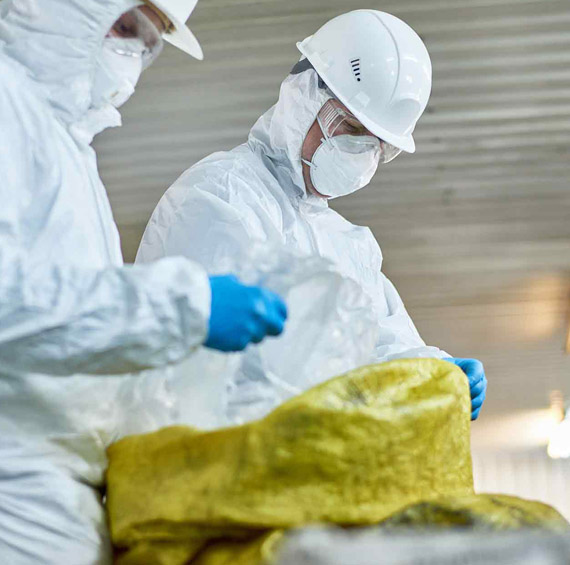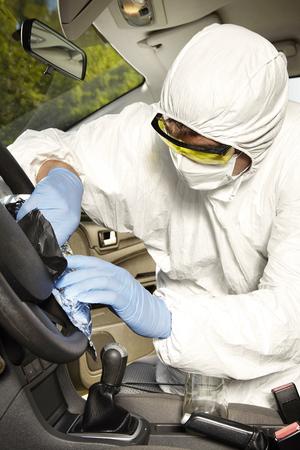Sewage Cleanup Solutions: Quick and Safe Remediation of Contaminated Areas
Sewage Cleanup Solutions: Quick and Safe Remediation of Contaminated Areas
Blog Article
Expert Biohazard Cleaning and Decontamination for Blood, Bodily Fluids, and Hazardous Products
The potential wellness risks connected with direct exposure to biohazards underscore the important need for careful handling and thorough clean-up. As we browse the intricate landscape of biohazard clean-up, recognizing the nuances of laws, compliance, and the specific tools at play becomes crucial in ensuring a thorough and safe purification procedure.
Wellness Risks of Biohazard Exposure
Exposure to biohazards presents substantial health dangers that can cause extreme repercussions for communities and individuals alike. Biohazards incorporate a large range of organic materials, including blood, bodily fluids, mold, germs, infections, and various other possibly transmittable products. When people come right into call with these biohazards, whether via crashes, improper handling, or ecological exposure, they face the danger of having severe health problems or conditions.
Among the key wellness threats related to biohazard direct exposure is the transmission of transmittable diseases. Bloodborne microorganisms such as HIV, liver disease B and C, and various microorganisms can be present in biohazardous products, posing a straight hazard to human health and wellness. Inhaling airborne biohazards like mold and mildew spores or entering into call with polluted surfaces can additionally cause breathing issues, allergic reactions, and various other negative health and wellness effects.
Furthermore, biohazard direct exposure can have long-lasting health implications, with some conditions materializing years after the initial call (Blood Cleanup). As a result, it is important to prioritize correct biohazard cleaning and purification to reduce these health threats and guarantee the safety and security of people and communities

Specialized Educating for Biohazard Cleanup
When it pertains to taking care of biohazard cleanup effectively and securely, specialized training plays a fundamental role in making sure correct decontamination procedures are complied with. Biohazard cleaning calls for specific understanding and abilities to properly mitigate risks connected with bloodborne microorganisms, physical liquids, and unsafe materials. Professionals learnt biohazard clean-up go through extensive guideline on just how to securely take care of, remove, and get rid of biohazardous products to protect against contamination and direct exposure.
Specialized training for biohazard cleanup covers a series of important topics, including appropriate personal protective equipment (PPE) usage, bloodborne pathogen awareness, decontamination techniques, and hazardous waste disposal protocols. Individuals learnt biohazard cleanup are equipped with the necessary knowledge to evaluate contamination levels, identify potential threats, and apply ideal cleaning treatments in compliance with regulatory standards.
Continual training and education and learning are vital in the field of biohazard clean-up to stay upgraded on the most recent decontamination technologies, safety methods, and guidelines. By buying specialized training, biohazard cleanup specialists can successfully react to emergency situation clean-up circumstances and safeguard both public wellness and the atmosphere.
Importance of Correct Decontamination Techniques
Making use of appropriate purification methods is essential in biohazard cleaning to successfully reduce and eliminate harmful materials health and wellness risks. Reliable decontamination not just guarantees the elimination of visible traces of blood, physical fluids, and various other biohazards yet likewise targets invisible microorganisms that might position significant wellness threats if not properly eradicated. By following rigid purification protocols, trained specialists can dramatically minimize the threat of direct exposure to hazardous bacteria, infections, and bacteria that might lead to infections or diseases.
Proper decontamination methods entail making use of specific devices and anti-bacterials that are specifically developed to reduce the effects of biohazards properly. Extensive cleansing and sanitation of infected areas are necessary to stop the spread of virus and ensure a safe environment for residents. Furthermore, the right disposal of biohazardous waste adhering to purification treatments is essential in preventing contamination of other surfaces or individuals.

Tools and Devices for Safe Clean-up
When dealing with blood, physical fluids, or harmful materials, biohazard cleaning specialists rely on specialized gear to decrease exposure dangers and extensively decontaminate the afflicted location. Additionally, biohazard cleansing packages containing disinfectants, absorbing materials, and biohazard bags are utilized to securely have and dispose of infected items.
Advanced cleaning tools like hospital-grade anti-bacterials, HEPA-filtered vacuum cleaners, and fogging devices are utilized to disinfect surface areas and remove biohazards efficiently. Specialized devices such as sharps containers and biohazard garbage disposal containers are utilized to safely manage sharp items and biohazardous waste products. By making use of the appropriate equipment and tools, biohazard cleaning professionals can guarantee a detailed cleanup process that prioritizes safety and reduces health and wellness dangers for both employees and passengers of the damaged room.
Rules and Conformity in Biohazard Cleansing
Correct adherence to laws and conformity criteria is extremely important in biohazard cleansing to make sure the blog safety and security of both employees and the setting. Federal government companies such as OSHA (Occupational Security and Health Administration) and the EPA (Epa) have actually developed certain standards for biohazard clean-up procedures to minimize health threats and ecological contamination. These guidelines cover a series of elements including the handling, transportation, and disposal of biohazardous materials, as well as the essential training and safety equipment needed for personnel associated with the clean-up process.
Biohazard cleaning firms need to stay updated with these policies to guarantee that their procedures meet the required safety standards. Failing to follow these biohazard cleanup certification policies can lead to extreme effects, consisting of penalties, lawsuit, and threatening the health of people and the atmosphere. By following rigid policies and conformity steps, biohazard cleansing business can efficiently minimize dangers and ensure a detailed and risk-free cleanup procedure for all events included.
Verdict
In final thought, biohazard cleansing and decontamination call for specialized training, appropriate strategies, and adherence to policies. Direct exposure to blood, bodily fluids, and harmful materials positions substantial health threats, making it essential to make use of the right devices and devices for secure cleanup. By complying with rigorous protocols and guidelines, experts can properly mitigate the risks connected with biohazard direct exposure and ensure the security of both themselves and others.
As we navigate the complex landscape of biohazard cleaning, understanding the nuances of policies, conformity, and the customized tools at play becomes crucial in ensuring a her comment is here safe and extensive purification procedure. (Blood Cleanup)
When it comes to taking care of biohazard cleanup efficiently and safely, specialized training plays a fundamental role in guaranteeing proper decontamination procedures are followed.Utilizing proper purification strategies is critical in biohazard cleaning to effectively eliminate unsafe products and decrease health and wellness risks. Additionally, biohazard cleaning packages having anti-bacterials, absorptive materials, and biohazard bags are made use of to securely consist of and dispose of infected products.
Government agencies such as OSHA (Occupational Safety And Security and Health And Wellness Administration) and the EPA (Environmental Protection Firm) have actually established specific standards for biohazard clean-up procedures to decrease health and wellness risks and ecological contamination.
Report this page